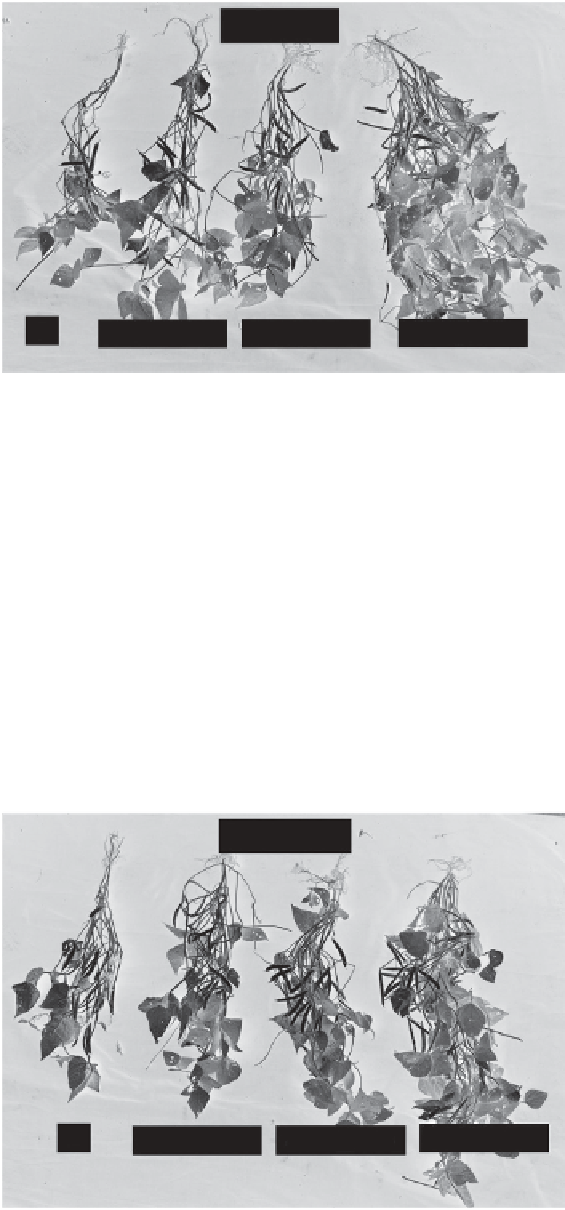Agriculture Reference
In-Depth Information
Corrente
0
0 + rhizobium
50 + rhizobium
120 kg N ha
-1
FIGURE 7.6
Growth of dry bean genotype Corrente at different N treatments in the second year of experi-
mentation. Left to right 0 kg N ha
−1
, 0 kg N ha
−1
+
inoculation with rhizobium, inoculation with rhizo-
bium + 50 kg N ha
−1
, and 120 kg N ha
−1
.
with fertilizers, and the presence of toxic agrichemicals (People et al., 1995b). Even with a high-
quality inoculant and good inoculation practice, failure can occur because of environmental fac-
tors influencing the survival of rhizobia (Brockwell and Bottomley, 1995). For example, 4-5% of
soybean inoculum was recovered from the soil 24 h after sowing at 28°C, but there was a <0.2%
survival sowing at 38°C (Brockwell et al., 1987).
Selection of appropriate rhizobium for adverse environmental conditions is an important step in
improving N
2
fixation in legumes. It is also a notable example of the selection of an acid-tolerant
strain of
Rhizobium tropici
for dry bean in Brazilian acid soils (Hungaria et al., 1997). This change
occurred within a relatively short time span following the introduction of beans to the region and
has also been reported in some acidic soil areas of Africa (Anyango et al., 1995). There is significant
BRS Marfim
0
0 + rhizobium
50 + rhizobium
120 kg N ha
-1
FIGURE 7.7
Growth of dry bean genotype BRS Marfim at different N treatments in the second year of
experimentation. Left to right 0 kg N ha
−1
, 0 kg N ha
−1
+
inoculation with rhizobium, inoculation with rhizo-
bium + 50 kg N ha
−1
, and 120 kg N ha
−1
.

